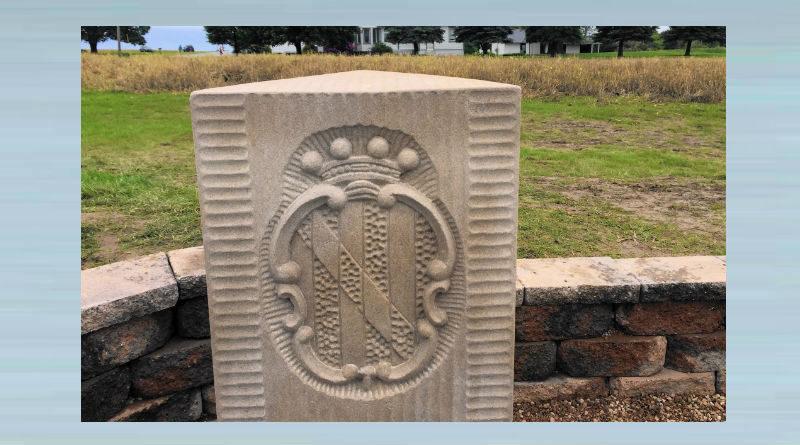Crownstone Along The Mason–Dixon line
Posted on 31 March 2021
The Mason-Dixon line, marked with crownstones, was surveyed by Quaker Jeremiah Dixon (1733 – 1799) and his partner Charles Mason.

Surveying took place between 1763 – 1767 in order to resolve a border dispute involving Maryland, Pennsylvania, and Delaware in colonial America.
Outdated maps meant fresh measurements were needed, but previous colonial surveys had proved inaccurate. So, Englishmen Mason and Dixon were hired by the sons of William Penn, as the duo were known in England as master surveyors and astronomers.
Five Year Survey
It would take the two men almost five years – lugging their equipment across hundreds of miles of wilderness – to complete the survey and cement their place in the timeline of the founding the United States.

The Mason–Dixon line had marker stones every mile and Crownstones every five miles. The Maryland side says ‘(M)’ and the Delaware/Pennsylvania sides say ‘(P)’.
Today, while a number of the original stones are missing or buried, many are still visible – resting on public land and protected by iron cages.
The Mason-Dixon Line was drawn in two parts. An 83-mile (133.5km) north-south divide between Maryland and Delaware and the more recognised 233-mile (375km) west to east divide between Pennsylvania and Maryland, stretching from just south of Philadelphia to what is now West Virginia.
Hailed as a groundbreaking technical achievement of the American Enlightenment, the line came to symbolize the border between the Civil War North and South, separating free Pennsylvania from slave-owning Maryland.
Return To England
After his work in colonial America was completed, Dixon returned to England and surveyed castles in Durham. Unfortunately, he developed a drinking problem and subsequently the Society of Friends chose to disown him.
An entry in the Quaker minute book of Raby, County Durham, dated October 1760, reads “Jery Dixon, son of George and Mary Dixon of Cockfield, disowned for drinking to excess.”
Dixon died in 1779 and was buried in an unmarked grave in a Quaker burial ground at Cockfield, County Durham. Charles Mason (1728 – 1786) remained in America and died in Philadelphia. The ‘Mason’ crater on the moon is named after him.
Despite their groundbreaking achievement, both men ended up in unmarked graves thousands of miles apart and remain virtually unknown in their home country of England.
In 2013, an exhibition about the life and work of Dixon was mounted at the Bowes Museum in Barnard Castle, County Durham -.titled Jeremiah Dixon: Scientist, Surveyor and Stargazer.

Images from pabook.libraries, elizabethhanbury.blogspot.com/ and en.wikipedia.org/

